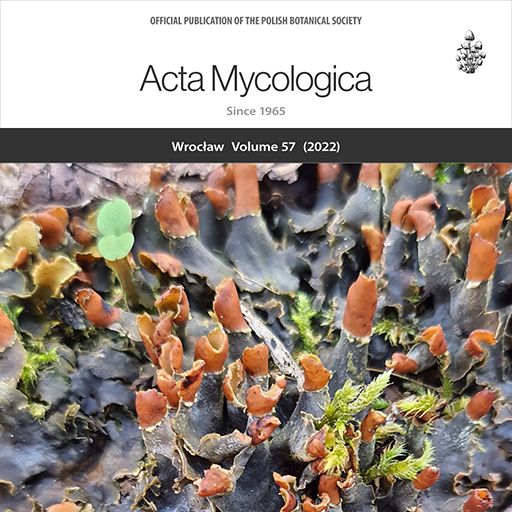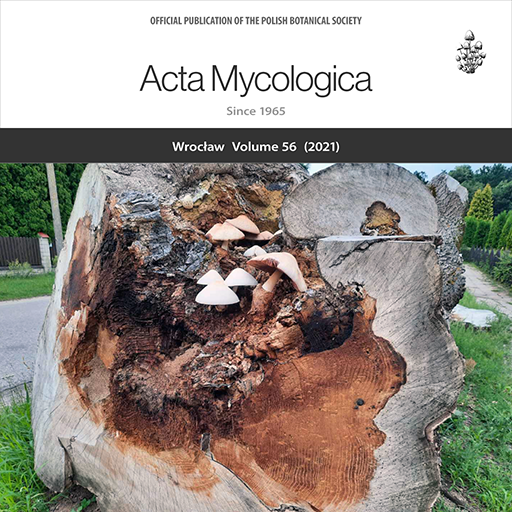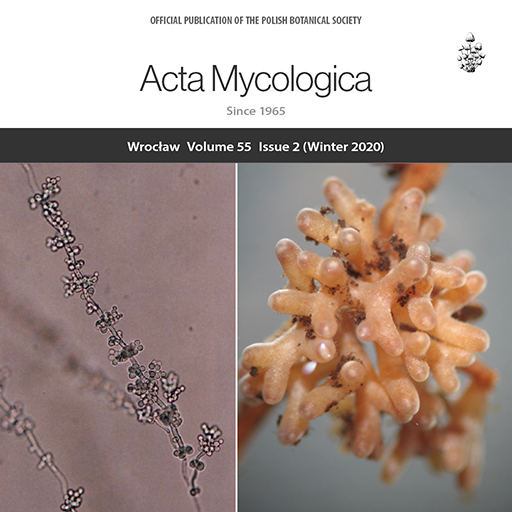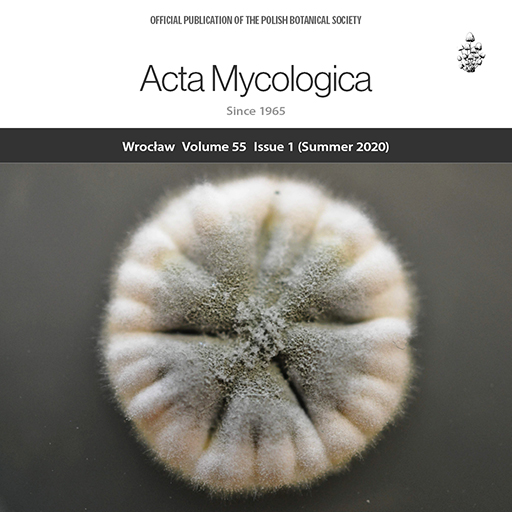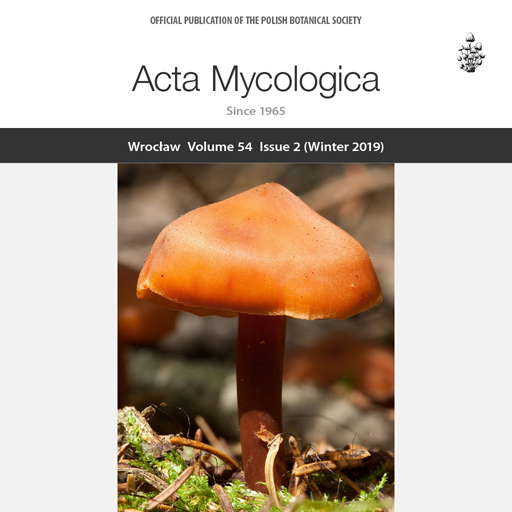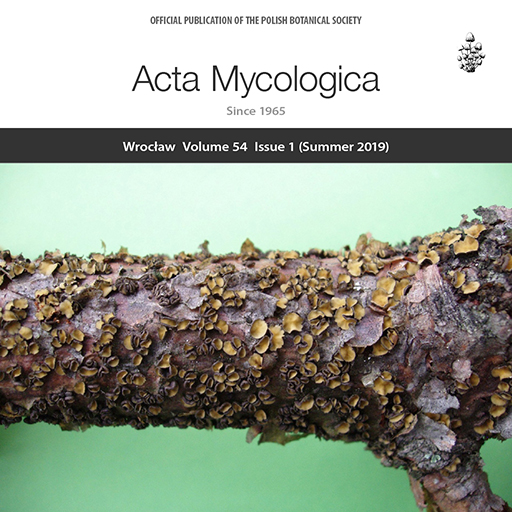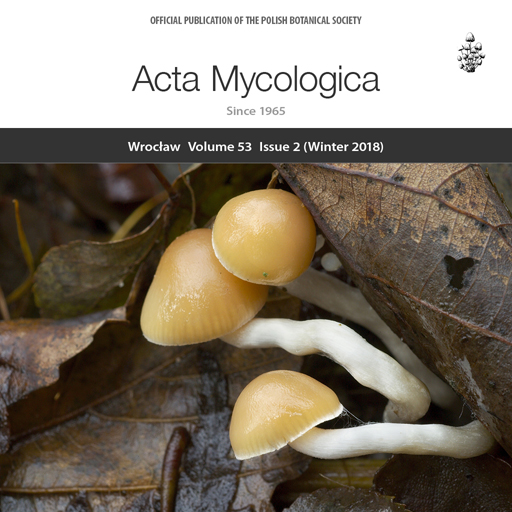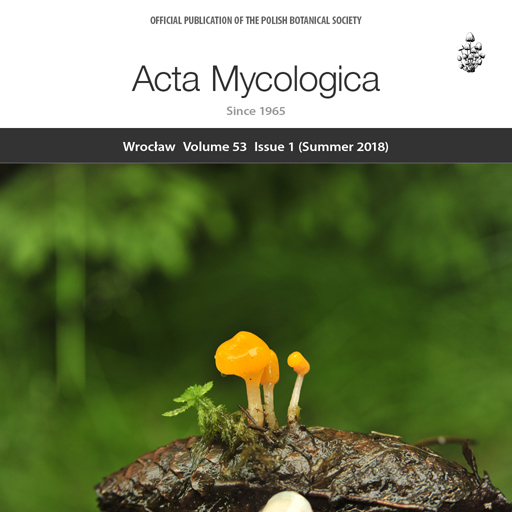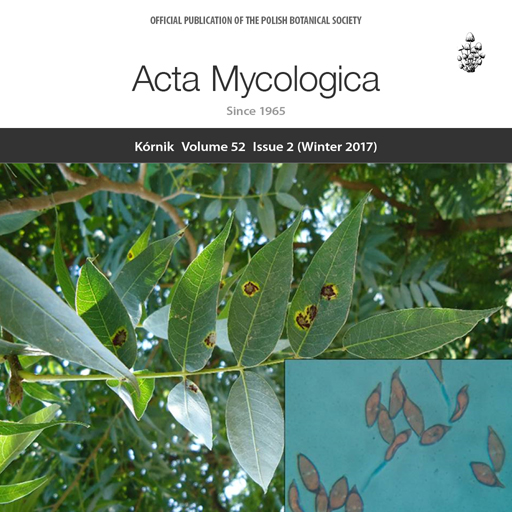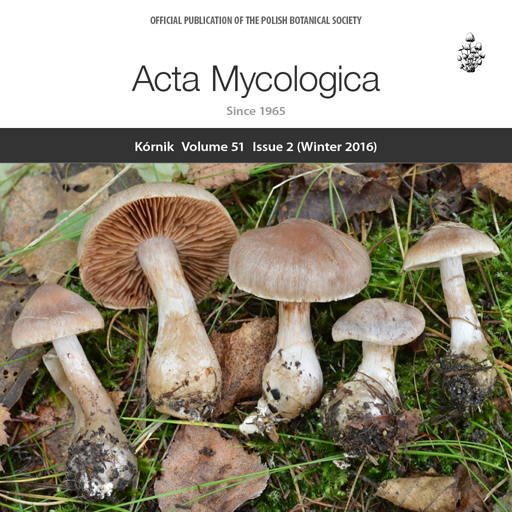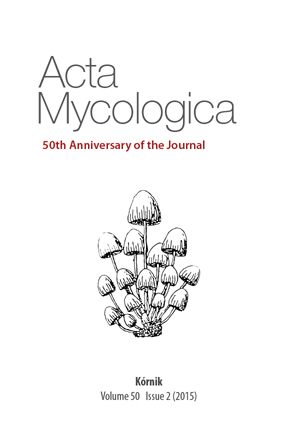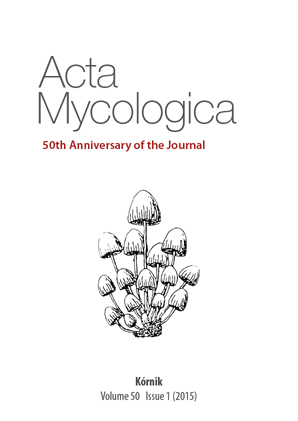2022
Vol 57 (2022)
On the cover Peltigera polydactylon (Neck.) Hoffm., at the nemoral forest edge, Georgia, the Caucasus.
[Author: Inga Kupradze]
2021
Vol 56 (2021)
On the cover Group of basidiomata of Volvariella bombycina (Schaeff.) Singer on log ash (Fraxinus excelsior L.) near the Guzianka Lock on the Great Masurian Lakes Trail (July 13, 2021). Volvariella bombycina is included in the “Red list of macrofungi in Poland,” with the R category – rare. This species also is included in two of the three Polish regional red lists of macrofungi: as rare in Polish Carpathians and near threatened in the Świętokrzyskie Mts.
[Author: Andrzej Grzywacz]
2020
Vol 55, No 2 (2020)
On the cover Candida albicans – Microculture on the agar Nickerson after 72-hr incubation (magn. 600×) (left) and Scots pine ectomycorrhiza (right).
[Authors: Maria Dynowska (left) and Maria Rudawska (right)]
Vol 55, No 1 (2020)
On the cover Penicillium spp. is a ubiquitous, cosmopolitan genus. It plays a key role in terrestrial environments. Identification of the species at the molecular and morphological level is laborious and may be ambiguous. Due to the insufficient ITS variability, especially in the case of species-rich genera of Ascomycota, including Penicillium, identification usually involves sequencing of other loci as well as observations of morphological features on diverse media and under various temperature conditions.
[Author: Katarzyna Patejuk]
2019
Vol 54, No 2 (2019)
On the cover Basidioma of Phaeocollybia jennyae (P. Karst.) Romagn. from the Bieszczady Mts.
[Author: K. Kujawa]
Vol 54, No 1 (2019)
On the cover Cenangium ferruginosum is a saprotroph or weak parasite that can cause shoot shedding of pine on large forest areas. In 1996, C. ferruginosum contributed to the dying of Scots pine trees on the area of over 1 million ha in northwestern Poland. On dead shoots, it produces dark brown apothecia, which in the wet state are saucer-shaped, 1–3 mm in diameter, with a visible beige hymenium.
[Author: Andrzej Szczepkowski]
2018
Vol 53, No 2 (2018)
On the cover In Poland, Psilocybe serbica M. M. Moser & E. Horak var. bohemica (Šebek) Borovička, Oborník & Noordel. has hitherto been found only in the vicinity of Lubawka village. It is also known from the Czech Republic (locus classicus near Brno) and perhaps also from Austria. Psilocybe serbica var. bohemica is very rare, the total number of known localities in Europe is less than 30. Moreover, many localities of this fungus have been damaged by the “magic mushroom hunters”, because it is known for high concentration of psychotropic tryptamine-like alkaloids.
[Author: Tomasz Pachlewski]
Vol 53, No 1 (2018)
On the cover Mitrula paludosa (Fr) occurs throughout most of mainland Europe as well as parts of Asia. In Poland, it is a rare and threatened by extinction species, growing in very damp places, in puddles and gully-holes, on mildewed wood or remnants of plants.
[Author: Amelia Piegdoń]
2017
Vol 52, No 2 (2017)
On the cover New species of rust fungi Skierka himalayensis A. K. Gautam & S. Avasthi, sp. nov., reported for the first time from leaves of Pistacia integerrima in India. The genus Skierka was defined by Polish scientist Marian Raciborski. The name refers to the person of Skierka, a hero of a fairy-tale fantasy Balladyna written by Juliusz Słowacki, Polish dramatist, poet, and philosopher.
[Authors: Ajay Kumar Gautam, Shubhi Avasthi]
Vol 52, No 1 (2017)
On the cover Gymnopilus decipiens (W. G. Sm.) P. D. Orton, fungus known from many European countries (e.g., France, Czech Republic, Germany, Norway, Sweden), but everywhere it is very rare. Recently, this species was found for the first time in Poland, in the Kampinos National Park.
[Author: Andrzej Szczepkowski]
2016
Vol 51, No 2 (2016)
On the cover Cortinarius murinascens Kytöv., Niskanen & Liimat. is an ectomycorrhizal species described in 2014 and, untill now, known only from Finland and Canada. Recently, the occurrence of this rare fungus in Poland has been confirmed for the first time. It was found on three reclaimed mine spoils: Adamów, Mt Kamieńsk, and Turów, in different tree stands with Betula, on calcareous soil.
[Author: Izabela Kałucka]
Vol 51, No 1 (2016)
On the cover Anaptychia ciliaris (L.) Körb. ex A. Massal. is a nitrophilous and heliophilous lichenized fungus, endangered and protected in Poland, valuable record of lichen in the agricultural land of Poland.
[Author: Daria Zarabska-Bożejewicz]
1 - 25 of 104 Items 1 2 3 4 5 > >>

